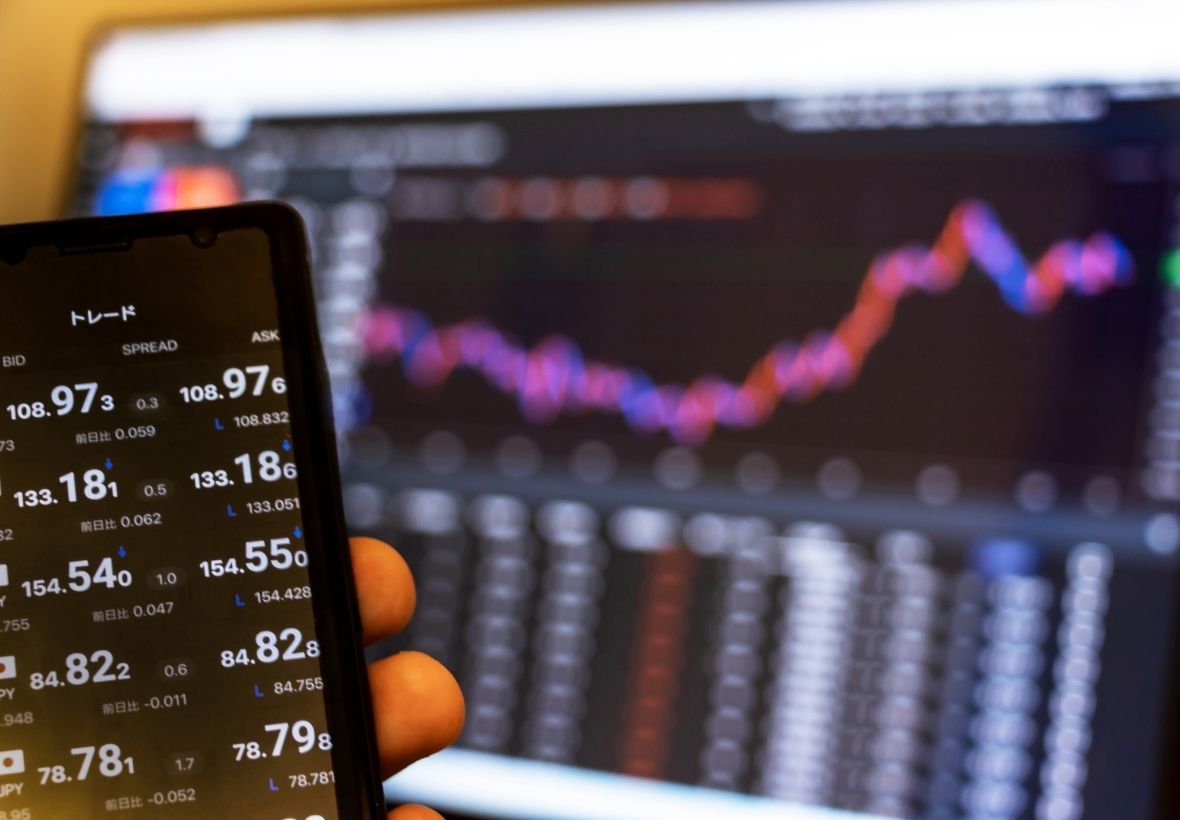In the fast-paced world of financial markets, traders are constantly seeking ways to maximize their profits and minimize their risks. One technology that has gained significant popularity in recent years is trading bots. These automated systems are designed to execute trades on behalf of traders based on pre-defined strategies. But how does a trading bot work, and what benefits does it offer? In this article, we will delve into the intricacies of trading bots, providing you with a comprehensive understanding of their functionality, advantages, and limitations.
How Does Trading Bot Work
Trading bots are computer programs that are developed to automatically execute trades in financial markets. These bots utilize algorithms and pre-defined trading strategies to analyze market data, identify trading opportunities, and place trades accordingly. They are designed to operate in a systematic and disciplined manner, eliminating the emotional biases that often affect human traders.
Trading bots work by connecting to an application programming interface (API) provided by cryptocurrency exchanges or brokerage platforms. This API allows the bot to access market data, place orders, and execute trades in real-time. The bot continuously monitors the market, analyzing price movements, volume, and other relevant indicators to identify profitable trading opportunities.
Benefits of Using Trading Bots
Trading bots offer numerous advantages for both novice and experienced traders. Let’s explore some of the key benefits:
- 24/7 Trading: Unlike human traders who need rest and sleep, trading bots can operate round the clock, taking advantage of trading opportunities even when the trader is not actively monitoring the market.
- Speed and Efficiency: Trading bots can execute trades at lightning-fast speeds, reacting to market conditions in real-time. They eliminate manual order placement and minimize latency, ensuring trades are executed with minimal delay.
- Emotion-Free Trading: Emotional biases can often cloud judgment and lead to poor trading decisions. Trading bots, being purely algorithmic, eliminate emotional factors from the trading process, ensuring a disciplined and systematic approach.
- Backtesting and Optimization: Trading bots allow traders to backtest their strategies using historical market data. This enables traders to evaluate the performance of their strategies before deploying them in real-time trading. Bots also provide tools for strategy optimization, enabling traders to fine-tune their approaches for better results.
- Diversification: Trading bots can simultaneously execute multiple trading strategies across various markets and assets. This diversification helps spread the risk and potentially improves overall trading performance.
- Monitoring Multiple Markets: Bots can monitor multiple markets and assets simultaneously, identifying trading opportunities that may be missed by human traders. This broader market coverage enhances the chances of capturing profitable trades.
How to Get Started with a Trading Bot
Getting started with a trading bot involves a series of steps that are essential to ensure a smooth and successful experience. Let’s take a look at each step in detail:
|
Step |
Description |
|
1. Research and Select a Bot |
Begin by researching and selecting a reputable trading bot that aligns with your trading goals and preferences. Consider factors such as performance, supported exchanges, security features, user reviews, and ease of use. Take your time to find a bot that suits your needs. |
|
2. Choose a Trading Strategy |
Determine your trading strategy or adopt a pre-existing one. This involves identifying technical indicators, entry and exit criteria, risk management parameters, and any other factors that define your approach. Having a well-defined strategy is crucial for effective bot trading. |
|
3. Connect to an Exchange |
Once you have chosen a trading bot, you’ll need to connect it to a compatible cryptocurrency exchange or brokerage platform. This typically involves creating an API key on the exchange and configuring it within the bot’s settings. The API key allows the bot to access market data and execute trades on your behalf. |
|
4. Configure Bot Settings |
After connecting the bot to an exchange, you need to configure its settings according to your chosen trading strategy. Specify the trading pairs you want the bot to monitor, the order types it should use, the position sizes, and the risk management rules. Take the time to fine-tune these settings for optimal performance. |
|
5. Backtest and Optimize |
Before deploying your strategy in live trading, it’s crucial to backtest it using historical market data. Most trading bots provide tools for backtesting, allowing you to evaluate the performance and profitability of your strategy. Use the results to make any necessary adjustments or optimizations. |
|
6. Monitor and Fine-Tune |
Once your trading bot is live and executing trades, it’s essential to monitor its performance regularly. Keep track of its trades, analyze the results, and make adjustments as needed. Monitor market conditions and adapt your strategy accordingly to ensure the bot is performing at its best. |
By following these steps, you can get started with a trading bot and begin automating your trading activities. Remember that continuous monitoring and fine-tuning are essential for optimizing performance and adapting to changing market conditions.
Keep in mind that different trading bots may have specific setup instructions and features, so it’s important to refer to the documentation provided by the bot’s developers for detailed guidance.
Pros of How Trading Bots Work
- Automation:
Trading bots automate the trading process, allowing for round-the-clock trading without the need for constant manual supervision. This eliminates the limitations of human traders, such as fatigue and sleep, and ensures that opportunities are not missed. - Speed and Efficiency: Trading bots can execute trades at high speeds, reacting to market conditions in real-time. They eliminate human delay and ensure swift order placement, potentially capitalizing on small price movements for profit.
- Elimination of Emotional Biases: Trading bots operate based on pre-defined algorithms and strategies, eliminating emotional biases from the decision-making process. This leads to a disciplined approach to trading and removes the potential for impulsive and irrational decisions.
- Backtesting and Optimization: Bots allow traders to backtest their strategies using historical data. This enables traders to evaluate the performance of their strategies before deploying them in real-time trading. Bots also provide tools for strategy optimization, helping traders fine-tune their approaches for better results.
- Diversification:
Trading bots can execute multiple trading strategies simultaneously across various markets and assets. This diversification spreads the risk and potentially improves overall trading performance by capturing opportunities in different market conditions. - Efficient Market Monitoring: Bots can monitor multiple markets and assets simultaneously, analyzing vast amounts of data quickly. This allows for the identification of trading opportunities that may be missed by human traders, leading to enhanced decision-making.
Cons of How Trading Bots Work
- Technical Issues and Glitches: Trading bots are software programs that are subject to technical glitches and issues. Malfunctions or connectivity problems can lead to missed trades, incorrect orders, or other errors. It’s essential to choose a reliable and well-tested trading bot to minimize these risks.
- Market Volatility and Uncertainty: Financial markets are inherently volatile and unpredictable. Rapid price fluctuations and unexpected market events can lead to losses, even for well-designed trading bot strategies. Traders must understand the risks involved and be prepared for market uncertainties.
- Over-Optimization and Curve Fitting: While backtesting and optimization are beneficial, there is a risk of over-optimizing trading strategies based on historical data. Strategies that perform exceptionally well in the past may not necessarily work as effectively in future market conditions. Traders need to strike a balance between optimization and adaptability.
- Dependency on Market Data and Connectivity: Trading bots rely on accurate and timely market data to make informed trading decisions. Any issues with data sources or connectivity can affect the bot’s performance and potentially lead to suboptimal trading outcomes. It’s crucial to ensure reliable data sources and a stable internet connection.
- Lack of Human Intuition and Adaptability: Trading bots operate based on predefined algorithms and strategies. They lack the human intuition and adaptability that can be beneficial in certain market situations. Human traders may be better equipped to react to unforeseen events or take advantage of unique opportunities that algorithms may miss.
- Regulatory and Legal Considerations: Depending on the jurisdiction, there may be specific regulations and legal considerations surrounding the use of trading bots. Traders need to ensure compliance with relevant laws and regulations to avoid any legal issues or penalties.
Understanding the pros and cons of how trading bots work can help traders make informed decisions when incorporating them into their trading activities. It’s important to consider these factors and assess the suitability of trading bots for individual trading goals and risk tolerance.
FAQs (Frequently Asked Questions)
Q: Are trading bots legal?
Trading bots are legal to use in most jurisdictions. However, it’s essential to comply with the regulations and guidelines of the specific financial markets you are trading in. Ensure that you are familiar with the legal requirements and seek professional advice if necessary.
Q: Do I need programming skills to use a trading bot?
While some advanced trading bots may require programming skills for customization, many user-friendly bots offer intuitive interfaces that do not require coding knowledge. These platforms often provide pre-built trading strategies that can be easily implemented without programming.
Q: Can trading bots guarantee profits?
Trading bots cannot guarantee profits as they operate based on pre-defined algorithms and strategies. Market conditions are highly dynamic and can change rapidly, leading to unexpected outcomes. It is crucial to understand the risks involved in trading and to use trading bots as tools to assist your decision-making process, rather than relying solely on their performance.
Q: How much does a trading bot cost?
The cost of a trading bot varies depending on the features, functionality, and complexity of the software. Some bots are available for free, while others require a one-time purchase or subscription fee. Additionally, there may be costs associated with using specific exchanges or accessing premium features.
Q: What are the risks of using a trading bot?
Using a trading bot involves certain risks, including technical glitches, system failures, and potential security vulnerabilities. It’s important to choose a reputable bot with a track record of reliability and security. Additionally, market risks, such as volatility and sudden price movements, are inherent in trading activities and should be carefully considered.
Q: Can trading bots replace human traders?
While trading bots offer automation and efficiency, they cannot completely replace human traders. Successful trading requires a combination of technical analysis, market understanding, and intuition, which human traders bring to the table. Trading bots serve as powerful tools to enhance and optimize trading strategies but should be used alongside human decision-making.
Trading bots have revolutionized the way traders engage with financial markets. With their ability to automate trading strategies, analyze market data, and execute trades in real-time, they offer a range of benefits for traders of all levels. Understanding how trading bots work and utilizing them effectively can provide traders with a competitive edge in the ever-evolving world of trading.




Leave a Reply